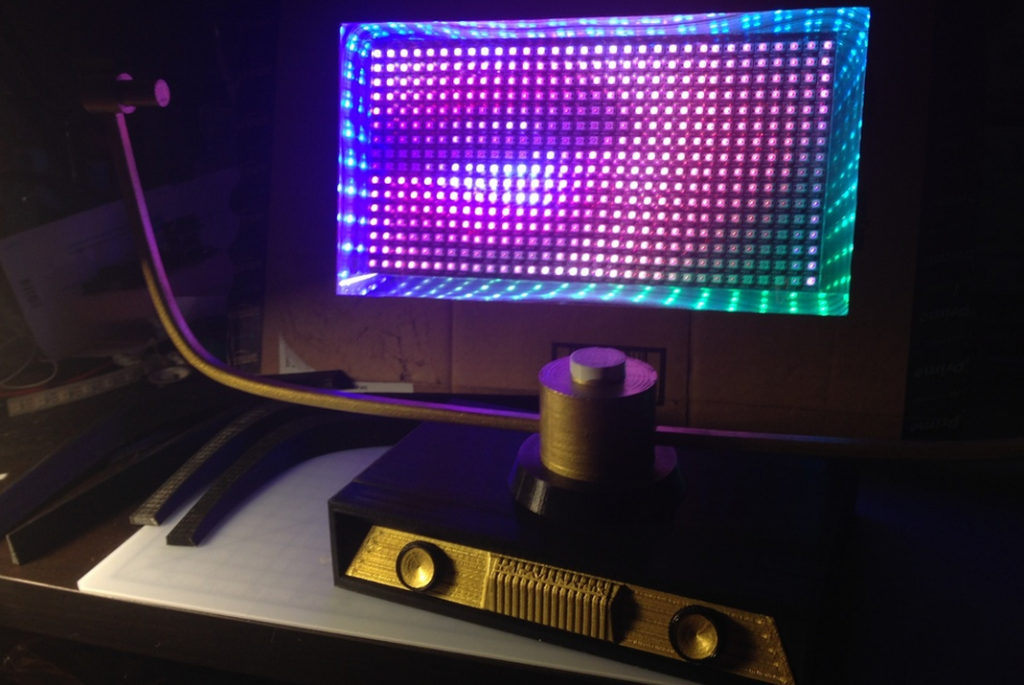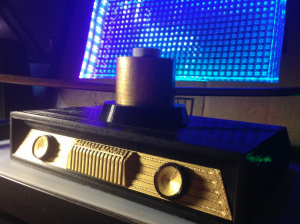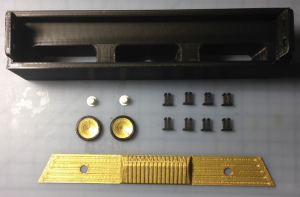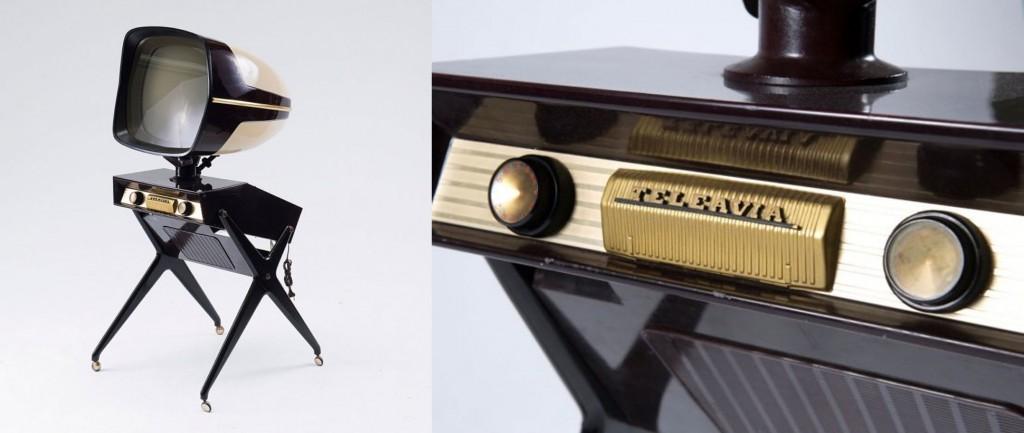 Normally I try to wait until a project is complete before I write up an article about it, but the Teleavia Matrix project is so cool that I kind of had to share it. While I love when 3D printing is used to help create things that would never exist without it, I have a soft spot for 3D printing projects that are really just about having fun with technology. I think 3D printing a retro-styled television case for a TV screen made out of flexible NeoPixel strips qualifies as fun, while probably not something that’s going to change the world.
Normally I try to wait until a project is complete before I write up an article about it, but the Teleavia Matrix project is so cool that I kind of had to share it. While I love when 3D printing is used to help create things that would never exist without it, I have a soft spot for 3D printing projects that are really just about having fun with technology. I think 3D printing a retro-styled television case for a TV screen made out of flexible NeoPixel strips qualifies as fun, while probably not something that’s going to change the world.
When Thingiverse user and 3D designer David Choi decided to tackle their Light It Up Challenge he decided to dust off an old idea that he had, to incorporate an LED light matrix with a 3D printed case. His original concept was to create a bottle shaped object, housing an LED screen, that would display messages, simulate a lava lamp or even a “cosmos-in-a-bottle” depending on the bottle’s orientation. But when that design managed to be too difficult to program at the size that he was hoping for he decided to switch it up and convert the NeoPixels into a TV screen and give it a 3D printable case styled like a sleek television from the 50’s.
“With a flat screen and video capability, it was natural for me to replicate a television as an enclosure. I have an attraction to designs of the 1950’s and 60’s, so I sought out what I believed to be a prime example of sleek televisions from that era, the 1957 Teleavia Panoramic 111. It was released then as a high definition TV (819 lines), which is still considered HD today. Not only would the screen be in a cool, vintage television set, but I wanted the screen to look like some sort of time portal so I incorporated the popular infinity mirror design into this. The effect produced would be that of an LED video matrix floating in a lighted abyss,” Choi said of his new design idea.
 Choi posted a short video of his NeoPixel screen in action on Instagram:
Choi posted a short video of his NeoPixel screen in action on Instagram:
 As he explained, after settling on a flat screen set in a retro TV case, Choi gave the design an extra pop by turning the NeoPixel screen into an infinity window. If you don’t know what an infinity window is, it is when a one sided mirror is placed in front of a two sided mirror with a light source between them, giving the illusion of an endless lightshow reflection. By using the Teleavia Matrix as the light source, the effect is beyond cool. So cool that despite his project still being incomplete, Choi took one of the top spots in the Thingiverse challenge that it was entered in.
As he explained, after settling on a flat screen set in a retro TV case, Choi gave the design an extra pop by turning the NeoPixel screen into an infinity window. If you don’t know what an infinity window is, it is when a one sided mirror is placed in front of a two sided mirror with a light source between them, giving the illusion of an endless lightshow reflection. By using the Teleavia Matrix as the light source, the effect is beyond cool. So cool that despite his project still being incomplete, Choi took one of the top spots in the Thingiverse challenge that it was entered in.
Choi started with the construction of the 32×16 LED matrix screen by using two 16×8, flexible NeoPixel matrices that he divided into 8×8 matrices a piece. NeoPixels aren’t really intended to be cut into pieces, so several of the strips short circuited, but after a lot of work repairing them he managed to create his screen. Of course right after he finished he noticed that Adafruit released 8×8 flexible NeoPixel matrix panels, which kind of sucked for Choi, but works out great for anyone looking to replicate this project.
Take a look at this video showing off the NeoPixel screen and some of the 3D printed parts:
“The magic behind the matrix is FadeCandy. FadeCandy is a NeoPixel LED driver with dithering and is controlled via USB and the FadeCandy server. Without dithering, LED matrices look bright, bold, and boring. Dithering results in higher quality images for an LED matrix. Since we’re restricted to a fewer number of pixels, image quality drops, but dithering essentially helps smooth out the image colors for our eye, helping to reproduce the detail that would be lost otherwise,” explained Choi.
The Teleavia Panoramic styled case was designed in BobCAD using reference images that he found from the internet to guide his design. While he kept it very close to the original Teleavia television set, he did add a few details from other models that he felt added to the overall look, including side arms that added stability to the monitor. Once completed, the Teleavia Matrix monitor can rotate up to 120° to accommodate any viewing position that you find yourself in. Choi also designed detailed knobs that are purely for decoration in his version, but could easily be wired to operate several of the TV’s functions.
 Currently Choi’s Teleavia Matrix runs off his computer but he is eventually going to be replacing it with a Raspberry Pi 2 Model B. With this is mind he has included several mounting holes and ample space for the tiny computer and Arduino UNO in his design. He also modeled printable snap-in fasteners so that anyone trying to make their own wouldn’t need to go hunting around for the correct sized screws or bolts. The 3D printable case was too large to print in a single piece, so Choi divided it up into several parts but included pegs and connectors so they will all fit together snugly and remain sturdy.
Currently Choi’s Teleavia Matrix runs off his computer but he is eventually going to be replacing it with a Raspberry Pi 2 Model B. With this is mind he has included several mounting holes and ample space for the tiny computer and Arduino UNO in his design. He also modeled printable snap-in fasteners so that anyone trying to make their own wouldn’t need to go hunting around for the correct sized screws or bolts. The 3D printable case was too large to print in a single piece, so Choi divided it up into several parts but included pegs and connectors so they will all fit together snugly and remain sturdy.
The Teleavia Matrix is still a work in progress, mainly because Choi is still creating the 3D printable parts. He initially intended to 3D print the case in ColorFabb’s beta BrassFill filament, but unfortunately he found the finished parts to be too soft to be used as structural parts so he had to start over with standard PLA. He estimates that when all of the parts are completed it will have taken him about 200 hours in total 3D printing time. You can keep an eye out for the finished TV on Thingiverse, and let us know what you think of this project over on our 3D Printed TV Set with a NeoPixel Screen forum at 3DPB.com.
Subscribe to Our Email Newsletter
Stay up-to-date on all the latest news from the 3D printing industry and receive information and offers from third party vendors.
You May Also Like
Precision at the Microscale: UK Researchers Advance Medical Devices with BMF’s 3D Printing Tech
University of Nottingham researchers are using Boston Micro Fabrication‘s (BMF) 3D printing technology to develop medical devices that improve compatibility with human tissue. Funded by a UK grant, this project...
3D Printing Webinar and Event Roundup: April 21, 2024
It’s another busy week of webinars and events, starting with Hannover Messe in Germany and continuing with Metalcasting Congress, Chinaplas, TechBlick’s Innovation Festival, and more. Stratasys continues its advanced training...
3D Printing Webinar and Event Roundup: March 17, 2024
It’s another busy week of webinars and events, including SALMED 2024 and AM Forum in Berlin. Stratasys continues its in-person training and is offering two webinars, ASTM is holding a...
3D Printed Micro Antenna is 15% Smaller and 6X Lighter
Horizon Microtechnologies has achieved success in creating a high-frequency D-Band horn antenna through micro 3D printing. However, this achievement did not rely solely on 3D printing; it involved a combination...































